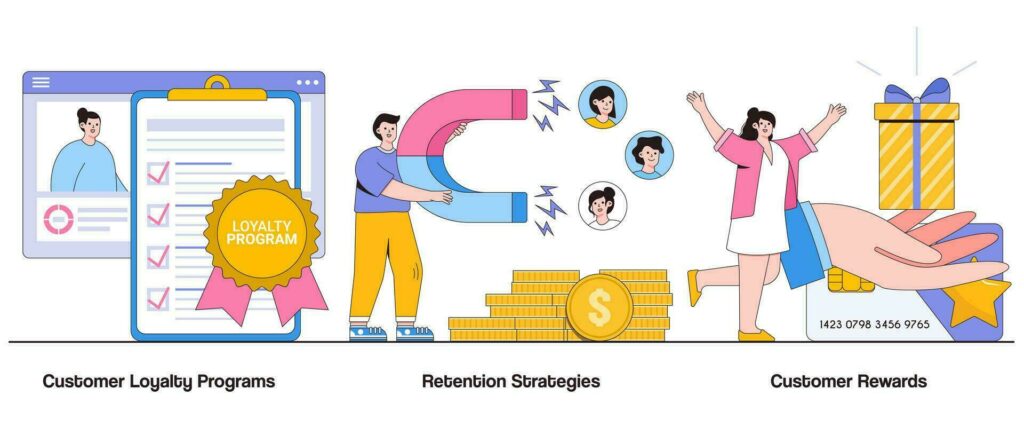Despite the changing times, the power of phone calls remains undeniable. Calls are still one of the most effective ways to connect with customers and convert them into loyal clients. They excel at providing immediate answers and resolving problems efficiently. A prompt, well-handled call can turn a casual customer into a devoted one, while overly aggressive or pushy tactics risk alienating them altogether.
Table of Contents
A Brief History of Customer Service
Customer service has been a part of human endeavor long before the age of technology – in civilizations like Rome and Greece, face-to-face interaction was the foundation of commerce. The merchant knew that for repeat business they would have to build good relationships with their customers.
For the merchant, keeping a customer was far more important than attracting a new one because loyal, ongoing customers were the key to survival. Then came the Industrial Revolution, which brought more and more machine-made products that led to an increased call for more structured customer service along with products.
Interactions between seller (service) and buyer also began to evolve, which helped the seller better understand the buyer’s needs and expectations, thus developing a better product (service) as well as a stronger trust level with the customer.
This article will discuss the importance and benefits of calls and the disadvantages associated with them as a point of communication. Then we will consider how you can use phone calls to better connect with and eventually win over your customers.
Why Phone Calls Over Texts and Emails?
In a society that has become engrossed in texting and emails, you may wonder why phone calls should ever matter. All communication methods have advantages and disadvantages, and the right method will often depend on the context. However, the level of personal interaction that comes with a phone call is far more than any other communication mode.
Best for Personal Communication
A phone call provides a sense of immediacy and humanity that texting and emails lack. They allow for real-time conversation, where tone, emotion, and intent are clearly conveyed. This level of personal communication is critical for trust, which leads to true connection with customers.
Accessible For All Customers
Not every customer has the skill or the time to quickly respond to emails or messages. If technology is the only way to engage your customers, then you cut out a large part of your audience if you choose this mode of communication. A phone call avoids these issues, allowing you to create meaningful relationships with every customer on your latest list.
Optimal for Tackling Complicated Problems
When tackling complex issues or describing nuanced solutions, phone calls are the most effective choice. Phone calls make customers feel seen, heard, and understood, and this connection builds trust and shapes understanding, reducing the chances for miscommunication.
Live Interaction
Calling eliminates waiting hours and days for a response to an email or text. You have uninterrupted conversation and engaged attention, and it is the fastest, most reliable way to communicate.
A Safer Method
Phone calls are much safer when it comes to sensitive information, not as it relates to the transmission of information but as it relates to ensuring that the right person gets the right information. Phone calls cannot be sent to another contact as an email or text can easily be forwarded and/or misconstrued.
Challenges of Phone Calls
Call communication has a few downsides, just like any other mode of communication.
Calling takes time: You and your customer must dedicate time for the call, which can sometimes be a challenge at the outset.
Timing: Trying to find a time for the call that works for both you and your customer can be a difficult task, especially when switching time zones.

Lower response rates: Compared to emails and texts, calls have a lower response rate. Not all customers will answer the call or may just not have the time to have a conversation.
Despite all of the issues that may arise with phone calls, however, the benefits of making a call are still obvious. Let’s now consider how to harness these benefits to connect better and ultimately win customers on the phone.
The Art of Mastering Calls
Let’s take a look at the different methods you can use to ensure you are interacting with customers effectively over the phone.
Be Prepared
Preparation is the cornerstone of effective communications with customers. Whether you are cold-calling companies to make a sale or you are handling one of your customers’ concerns, you have to know your customers.
Spend time getting to know your customer’s business and the market they operate in. This will give you important context to the discussion. Being prepared builds trust and helps position you as an informed and helpful resource for them. You also need to know your company, products, and services comprehensively! If you are not confident in your product and guiding the customer, you cannot help your customer.
Answer Calls Promptly
Being quick to answer calls demonstrates that you care about your customer’s time and the money they spend on calls. As a general rule, pick up a call before the 4th ring (to be exact, you should answer at the beginning of the third ring). This small act can make a customer feel valued and make them more open to the call. If you can’t answer the call immediately, keep them waiting at a minimum. If for some reason you can’t get to them right away, allow them to select a call-back option to minimize their aggravation.
Provide a timeframe you will call them back by, and try to call them back in that time period. By keeping customers informed, you prevent them from feeling ignored or left in the dark. A frustrated customer will be less likely to return to your business.
Pick the Right Team
A cohesive and skillful team ensures great results. Your team is the face of your brand; employees should act according to that brand. It’s not only about being knowledgeable about your product or service, but it’s also about how you convey and communicate effectively by using the right words, tone, and timing.
Service representatives must be trained on how to offer respect, patience, honesty, and trustworthy service while keeping confidence and professionalism. They should adopt an effective style of communication and ensure they use that style. Customers do not wish to repeat themselves; it is critical to get it right the first time.

There is nothing worse to customers than dealing with a disengaged or error-prone representative. The same goes for representatives who talk too much or excessively sell a product or service through inappropriate communications (i.e., aggressive sales). Instead, an optimistic approach will be principally people-centered and focused on solutions per customer.
Tailoring the Experience for Success
Keeping customers connected and interested means personally adapting communication to each customer’s individual needs and preferences. To effectively achieve this, you have to not only have a close comprehension of your audience, but you also have to be actively listening. The issues and obstacles that customers report expose vital insights about their experience, indicating what is working for them and what is not working for them.
Asking targeted questions allows you to dig deeper into their experience.
Questions such as “What is your favorite part of this product?” or “What is preventing you from purchasing this product?” uncover necessary and intricate information about their needs and hesitations about purchasing. Social media reviews and comments also provide great areas to gather customer feedback.
Platforms such as Instagram and Facebook are beyond valuable for understanding your audience. This information also allows you to shape your responses and even your larger technology and marketing approaches for their expectations.
The Art of Redirecting
Redirecting conversations is a skill every customer service representative should master. When faced with questions you’re meant to avoid, faltering or rambling will harm your credibility and reflect poorly on your company. Instead, focus on redirecting the conversation tactfully.
If a customer strays off-topic, guide them back gently. Manage the length of your responses. Keep them concise and steer the discussion toward relevant issues. However, when you have information that could genuinely help, don’t hesitate to explain as much as needed.
Being self-aware is crucial. Understanding your own strengths and weaknesses allows you to handle conversations more effectively and provide value without overstepping your boundaries.
Follow Up: Ending on the Right Note
Did you know that 80% of lead conversions require up to five follow-up calls? Follow-ups are vital regardless of how the previous interaction went. Contrary to popular belief, persistence, when done correctly, can significantly impact outcomes.
Follow-ups can take various forms:
- A polite email or text after the call, thanking the customer for their time and asking for feedback.
- A scheduled call to check on unresolved issues or to follow up on a sale.
Balance is key. Excessive follow-ups can come across as pushy and may alienate the customer. Instead, focus on maintaining a friendly, solution-oriented approach to keep the conversation open and productive.
Sealing the Deal
A simple phone call holds immense power when done right. With the right personnel, research, and intention, you can transform even the most skeptical individuals into loyal customers. It fosters a human connection—something that other communication methods have yet to replicate.
Got big ideas for your business? Let us help bring them to life! At EvolveDash, we’re dedicated to helping businesses thrive in the digital world. From custom mobile apps to personalized websites, our team is with you every step of the way.
With over 100 satisfied clients and 450 successful projects, we’re confident we can help you reach your goals too. Ready to take your business to the next level in 2025? Let’s work together to turn your vision into lasting success!
FAQS
- How can customer service improve customer satisfaction?
This can be achieved by quickly resolving issues, offering helpful support, being patient, and creating a friendly yet professional interaction.
- What is the difference between inbound and outbound calls?
Inbound calls are made by customers seeking support or information. On the other hand, outbound calls are initiated by companies looking to promote products and services.
- What is the purpose of call scripts?
Call scripts ensure consistency in your interactions with different customers. They improve communication and overall customer experience.
- How do you win over a difficult customer?
In order to win over a particularly difficult client, it is important to stay calm, show empathy, and apologize sincerely when necessary. You must try to offer a solution and remain positive. If needed, escalate the issue to a superior. Be sure to follow up to ensure satisfaction.


















